Need To Know When Visiting Central Asia
Central Asia travel tips
There’s no escaping the fact that the more recent history of the region has been troubled.
Post-Soviet independence saw the rule of dictators with appalling attitudes to human rights. But there are hopeful signs of things changing in at least some of the ‘stans as people, especially the young, find their voice.
The hope must be of the ‘stan rulers gradually realising that if they want more tourism, and all the benefits that that brings. As that happens, the current trickle of visitors will become a flood. The time to go is now and here are a few helpful tips for navigating Central Asia.
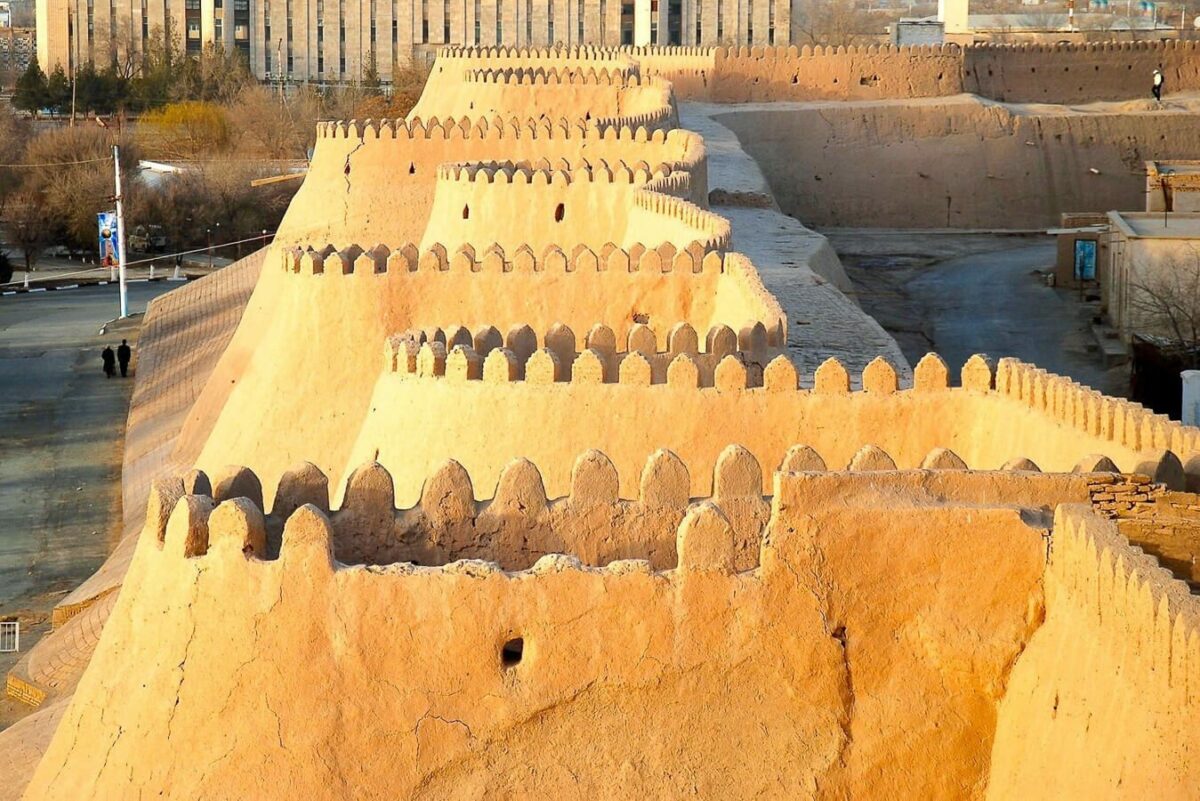
Khiva city walls in Uzbekistan
When to go to Central Asia
Climate, seasons and festivals
The climate of Central Asia is one of extremes. Between the lowest point in the former Soviet Union, 132m (433ft) below sea level to peaks over 7,000m (23,000ft) high, you should expect anything and everything.
The region is also the furthest place on Earth from the ocean. The softening influence of the sea has no effect here, meaning summers are hot, winters are cold, and spring and autumn are transitions that take up only a few weeks in the year. Timing it right is of the essence.
If you are only visiting either the lowlands or the highlands, this is not a problem. If you want to do both, you will need to compromise somewhere.
The lowlands of Uzbekistan, Kazakhstan and Turkmenistan have agreeable springlike weather from March to May and from September to November. Be aware that the north of Kazakhstan is for all intents and purposes, Siberia. Summers are hot like elsewhere, but winter finishes one month later here and starts a month earlier.
If you intend to visit Kyrgyzstan’s mountainous areas or the Pamir Highway, summer, from mid-June until mid-September, is the best time to go. You can stretch it with a few weeks on either side if you do not intend to go hiking, but after that, snow starts falling and travel gets a lot harder.
The major feast in the region is Nowruz, the Persian New Year that is celebrated from Tirana to Kabul on 21st of March, the vernal equinox. The whole Silk Road region takes a week off to burst into song and dance, cook special dishes and engage in horse games of all manner and kind.
Kazakhstan is still cold at this time, and the tulips will only awaken in April, but Uzbekistan and Turkmenistan can both be visited for a festive Nowruz tour. In Kyrgyzstan and Tajikistan, Nowruz is a snowy affair.
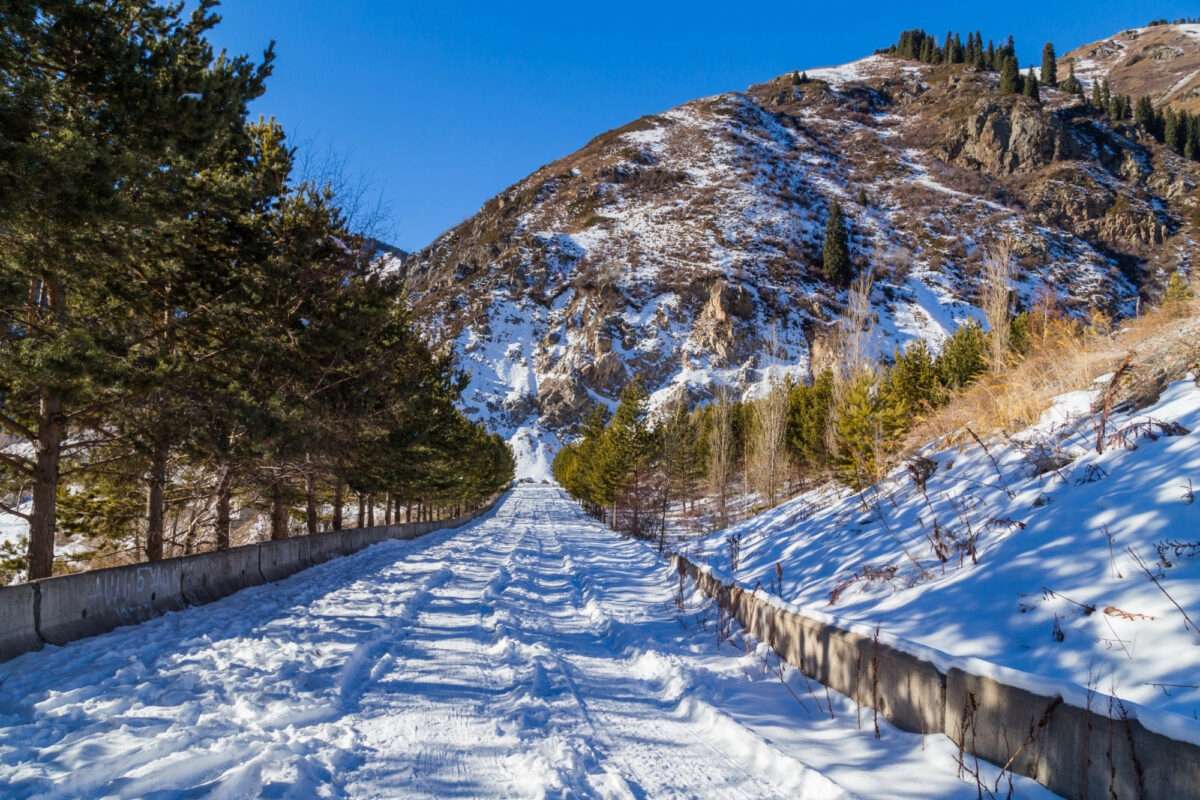
Snowy Mountain valley in Ak Bulak, Almaty
What to eat in Central Asia
Central Asia is generally absent from the world gastronomy map. Is that justified? At first sight, yes. Restaurants around the region tend to serve the same classic staples: plov (a rice dish mixed with carrots, raisins and meat), manty (dumplings), shashlyk (grilled kebabs) and laghman (an Uyghur spaghetti in a sumptuous broth).
The would-be foodie baulks. The real culinary adventurer, however, digs deeper. Bazaars are the best place to find culinary specialities: Dungan ladies selling mountains of herbs and spices that have no English name stand shoulder to shoulder with pensioners making some extra cash from the heirloom berries and tomatoes from their cottage.
Koreans selling dog meat. Nuts galore. And of course, an incredible array of dairy products made from cow, goat, horse and camel milk.
Regional specialties
In Kazakhstan and Kyrgyzstan, beshbarmak is a mountain of meat on top of pasta lathered in onion sauce.
In Uzbekistan, try some kozhe on a hot day; a cold soup of fermented milk and barley. Also, you cannot miss the flat breads (lepyoshka) Uzbeks bake daily: they are everywhere, in great variety.
In Turkmenistan look out for the meat pies in all shapes and sizes, while Tajikistan has qurutob: a fresh salad mixed with yoghurt.
Meat-heavy
Central Asia has been dubbed a vegetarian’s nightmare. For a vegan, it’s even worse. The nomadic heritage of these countries means that farming vegetables only came with the Russian invasion. Without exception, every national dish that locals pride themselves on revolves around animal products: meat, milk, cheese and cream form the base of everything.
Vegetarianism is usually understood as “only eats chicken”. Restaurant salads stick to a combination of cucumber and tomato that quickly wears thin. If you are a vegetarian, ask your tour operator what provisions can be made (Uzbekistan has the best understanding of Western culture).
High-end restaurants can cater to vegetarian needs, and big cities have Indian restaurants. As a back-up, self-cater. Once summer comes, the bazaars of Central Asia are overflowing with delicious melons, pomegranates, nuts and other fruit and vegetables. Enjoying these is no punishment.
Although horse meat is commonly eaten around the world, many regard it as a taboo food. However, horse meat sausage (kazy) is a national dish in Kazakhstan and Kyrgyzstan. If that’s likely to be a problem for you, check with your host to make sure your food is horse-free before you dig in.
Despite the prevalence of Islam, the halal industry is still only in its infancy, and there is no agency to verify the claims businesses make to attract Muslim customers.
Souvenirs and shopping
One of the many joys of exploring Central Asia is discovering the ancient craft traditions of the Silk Road, home to some of the best artisans anywhere on earth.
For those who appreciate history and art there are few greater joys than watching a 7th-generation potter shaping a lump of clay into an elegant pot, his hands guided by the experience of centuries. The wild, joyous traditional Uzbek dress makes for unique souvenirs. The full outfit might be a little OTT for back home but the silk ikats (dyed textiles) are great for distinctive scarves and throws.
Seeing craftsmen perform their work out in the street; traders discussing, shouting, disagreeing on the bazaar: this is what the Silk Road is and always has been about, and in the Ferghana Valley you can step right in and become a part of it.
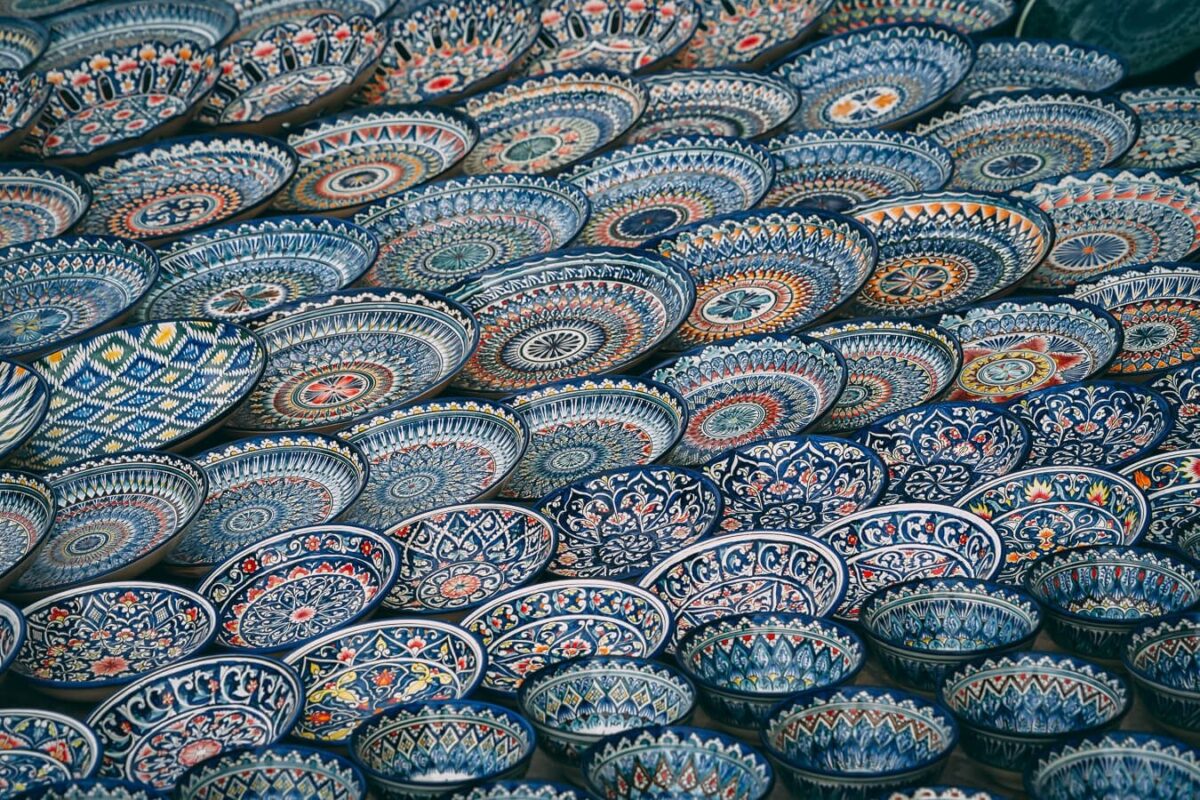
Ceramics in Khiva, Uzbekistan
Top shopping highlights
The Ferghana Valley is the heart of silk and ceramic production in Central Asia and the city of Margilan is Uzbekistan’s silk weaving centre, where you’ll find the best prices for textiles and silks. Visit the factory for a look into the process of raising silkworms and weaving silk fabrics, then head to the bazaar for amazing deals. Just down the road lies Rishton, where quiet workshops are concentrated on producing delicately hand-painted Uzbek ceramics.
Needlework is everywhere, although arguably Samarkand has the most skilled artisans. Products range from whimsically decorated skull caps to suzani carpets that take months to complete. Carpets are omnipresent throughout the region, and every country thinks they make the best ones: Turks, Iranians, Azeris, Turkmens, Afghans and Uzbeks all have longstanding carpet traditions. The most original are Kyrgyz shyrdak carpets, felted using homegrown wool.
Metal is still worked by hand in much of Central Asia. Every city has a street alive with the boisterous noise of smiths cranking out chimneys, gates, knives, pliers and other household items. Elaborate handmade jewellery is the speciality of Turkmens, whose brides wear neck-breaking amounts of it on their wedding day. Wood carving, on the other hand, is a Tajik speciality. Hand-carved doors and pillars grace mosques and teahouses around the region, and endearing wooden cradles are built to welcome new babies.
Central Asia FAQs
How should I budget my trip?
When travelling with a tour operator, most of your costs will be covered in advance. Kyrgyzstan and Uzbekistan are cheaper destinations than the other three countries. Tajikistan, Kazakhstan and Turkmenistan still see few tourists, meaning competition is low and prices high in these fledgling markets. In addition, rough terrain and government taxes add extra costs.
Although travelling here can be expensive, the cost of living in Central Asia is relatively low: compare it to Mexico or eastern Europe.
What currency should I bring?
USD is by far the best currency to travel with and will be readily converted to local currency everywhere you visit. The Euro is also accepted, but you will have more trouble finding exchange in some places. Stick to dollars.
Kazakhstan and Kyrgyzstan have plenty of ATMs where you can withdraw cash in local currency, as well as an abundance of currency exchange offices. Tajikistan, Uzbekistan and Turkmenistan have some ATMs, but they are empty more often than not. Do not rely on them, and bring all the money you think you will need with you in USD.
In addition, Uzbekistan and Turkmenistan have a black market for dollars where prices for your money are much higher. Your guide may be able to make a good deal on the bazaar.
In Turkmenistan, only the blue-ish $100 bills printed post-2013 are accepted. Make sure they are in good-as-new, crisp condition. Smaller denominations should also be in crisp condition, but there are no new bills to worry about, any bill is fine.
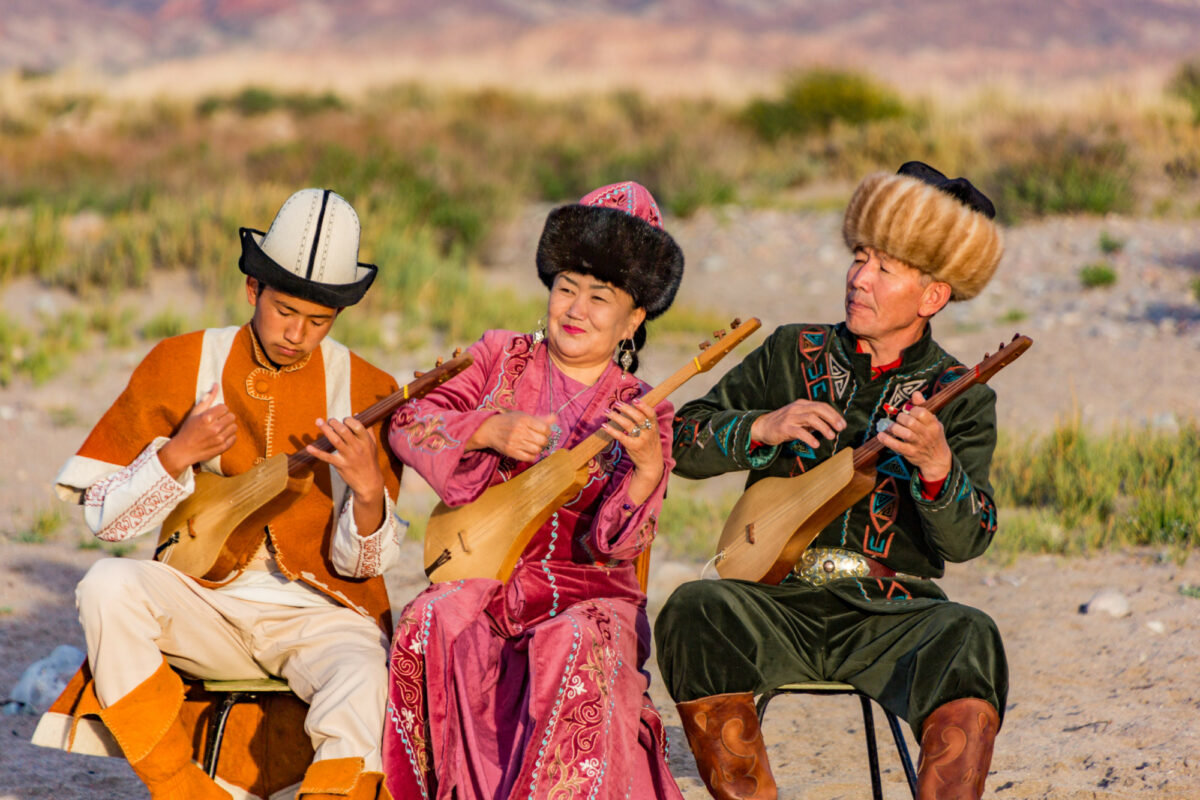
Musicians playing traditional instruments at Issyk Kul in Kyrgyzstan
What visas are required?
Kazakhstan and Kyrgyzstan offer visa-free stays of 30 days and 60 days respectively for visitors from developed economies. Tajikistan has introduced an easy e-visa system that also allows for a 45-day stay. An additional permit is needed to visit the Pamir region, but this can easily be requested together with the e-visa.
To visit Uzbekistan, you will need a visa. In addition, to get the visa from the embassy, a letter of invitation from a tour operator is necessary for most countries. In Turkmenistan, all tourist visits must be accompanied by a local guide. The visa procedure is opaque, and sometimes potential visitors get rejected without ever finding out the reason. Most tourist visas are granted, though.
Note that visa information is correct at time of writing and may change without notice. Confirm with your tour operator when you book.
How do border crossings work?
In general, border formalities are simple and straightforward. Nevertheless, thorough checks at the Uzbek and Turkmen borders mean you can easily spend an hour or more here. Between Shymkent and Tashkent, the border crossing is especially busy.
Take special care before entering or leaving Uzbekistan. As its neighbour Afghanistan produces 90% of the world’s heroin, Uzbekistan has draconian drug laws. Many common painkillers, sleeping drugs and anxiety blockers are illegal in Uzbekistan. Codeine is a common component of many painkillers but is highly illegal in Uzbekistan. Benzodiazepines and sleeping drugs you may own are probably also illegal. Make sure you do not have any of these substances in any medication, and bring the correct boxes, usage manuals and prescriptions for all your medication. Books can be tricky too. Don’t bring religious literature of any kind, or books about Uzbek politics or history. A travel guide is fine, though.
Your camera photos may be checked both in Uzbekistan and Turkmenistan. Snaps of government buildings, men with beards (old men are fine), anything concerning the military and naked girls are all big no-nos.
Any religious or cultural sensibilities and taboos?
Although Central Asia is predominantly Sunni Muslim, there are large numbers of Christians living everywhere. In the cities, mini-skirts and beer taverns dominate, while in rural areas (Uzbekistan and Tajikistan especially), people dress more conservatively: wear long sleeves to not attract stares.
Although some people might not drink alcohol and privately follow Ramadan nowadays, the holy month has no effect on daily life. Restaurants are open and alcohol is served everywhere.
Nevertheless, women should bring a scarf to cover their head when visiting mosques. A long skirt can be useful in the hot desert climate.
Islam is, in a way, new to the region. After more than 70 years of state-sanctioned atheism under the Soviets, religion needed to be re-learnt. The anecdote of the Saudi clerics who came to open a new mosque in Kazakhstan and were welcomed at the airport with shots of vodka is just one comic example of the lack of knowledge about Islam in the region.
Although the ultra-strict Saudi brand of Islam is spreading in Central Asia with the influx of Saudi money, it is heavily frowned upon by the vast majority of locals. Central Asia’s religion today is still mostly a mix of Sufism, a less legalistic and freer version of Islam, and Tengrism, the natural religion of the past.
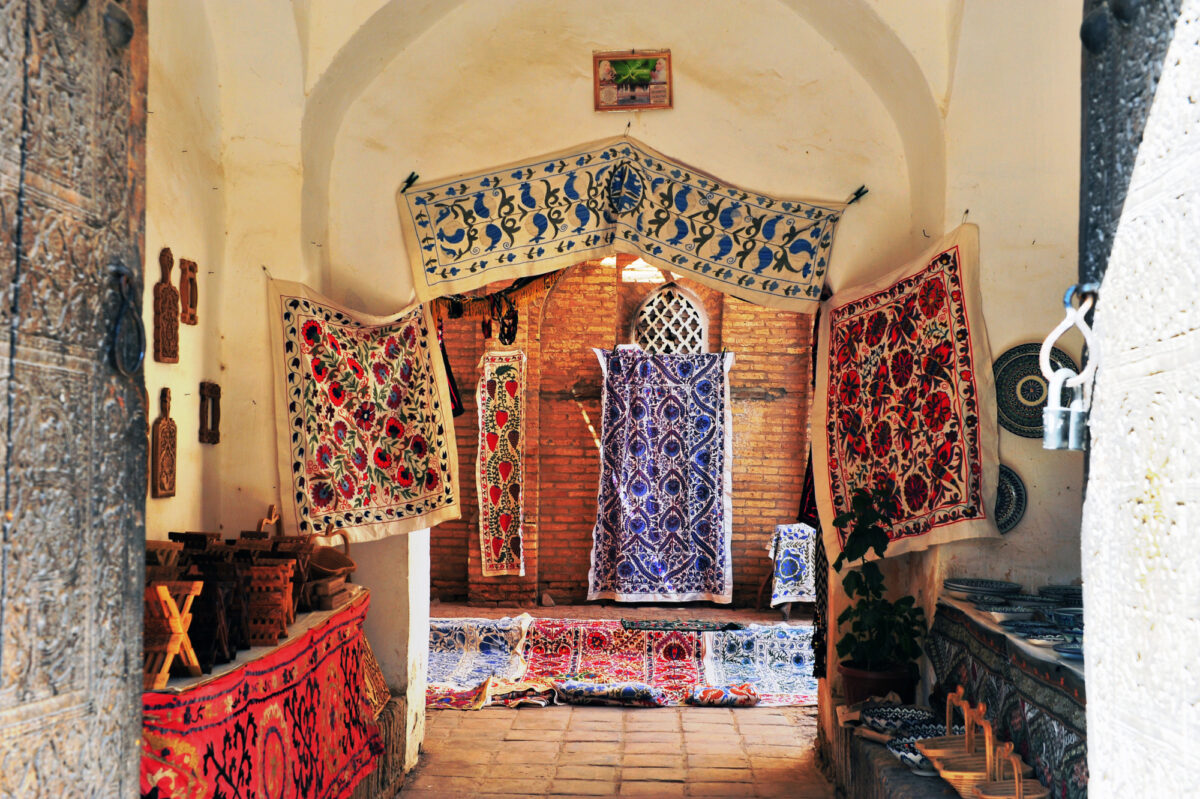
Carpets in Uzbekistan
Are vaccinations required?
Typhoid, DTP (Diphtheria, Tetanus and Polio) and MMR (Measles, Mumps and Rubella), Hepatitis A and B are standard travel vaccinations and you should double-check you are up to date. Vaccinations for rabies are expensive and the chance of obtaining the virus is very small if you do not stay in the countryside for an extended time, so you should weigh up the risks for yourself.
If you intend to go hiking and camping, get vaccinated for tick-borne encephalitis, a deadly disease transferred by ticks living in forested areas.
How do I stay well and healthy?
Altitude sickness can strike anyone in high areas such as Song Kul or the Pamir. Although medication exists to cope with the symptoms, the best remedy is to descend as soon as you feel the effects (dizziness, nausea, headaches) coming on.
The most common illness for travellers in Central Asia, however, is diarrhoea or constipation. Make sure to always wash your hands before eating, avoid tap water, ease yourself into the dietary habits of the region by mixing fruits and homemade meals with restaurant food, and pack some basic medicine like Motilium and Imodium for when the proverbial hits the fan.
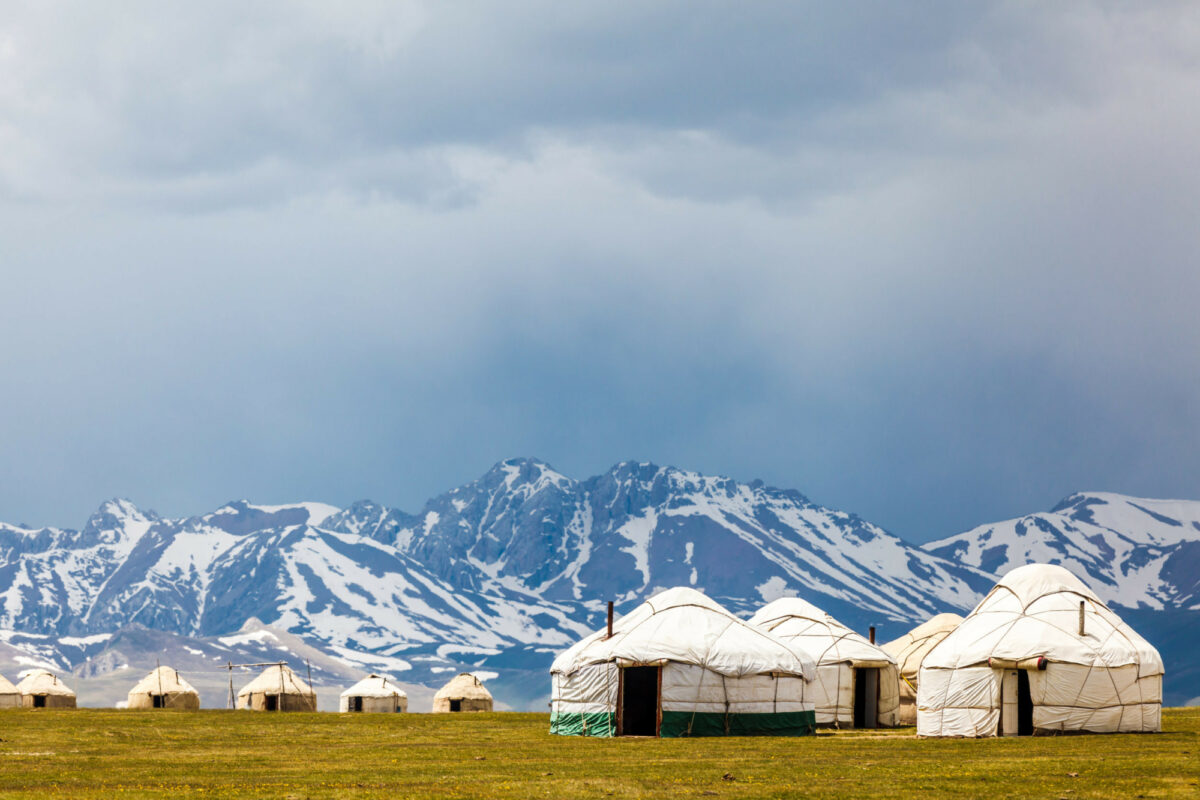
Yurts at Song Kul
Is Central Asia safe?
Yes. Violent crime and thievery is low. Bishkek and Osh are the only places where more caution is required as pickpockets operate in the bazaars and (fake) police target tourists for shakedowns. Bishkek’s nightlife also attracts shady characters.
The rest of Central Asia can be considered perfectly safe for visitors who keep normal and common-sense precautions in mind. Behave as you would anywhere else in the world: Don’t wander down any dark alleys alone, keep your valuables out of sight and don’t flaunt cash.
One very real danger to watch out for is traffic and road safety. If you travel with a tour operator, vehicles will be in good shape and come with a responsible driver. If you need to get in a local taxi, make sure you get on board with an older, experienced driver. Young men often drive irresponsibly fast.
Terrorism is top of mind for many due to the excessive media attention, but, as clear-headed travellers are well aware, the attention it receives is not even remotely in proportion to the actual danger. As far as we know, no tourist has ever been killed by a terrorist in Central Asia.
Nonetheless, political instability is a reality in Central Asia. Kyrgyzstan has the most open society, and protests, roadblocks and revolutions have caused disturbances in the past. Other Stans keep a tight lid on any type of public dissent, but they are prone to unpredictable lockdowns at the first whiff of trouble. A good example was the sudden death of the president of Uzbekistan in 2016, when borders closed without warning for several days.
There is very little you can do about this, besides being aware it is a remote possibility, and paying attention to your guide’s instructions should anything out of the ordinary happen.




